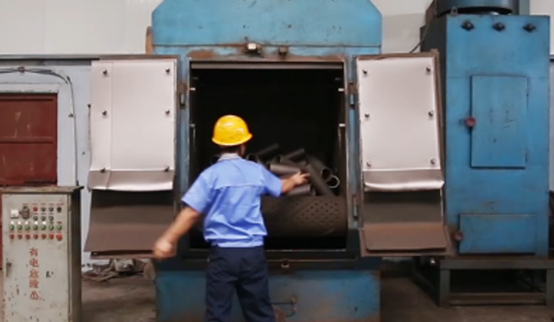 Afrikaans
Afrikaans  Albanian
Albanian  Amharic
Amharic  Arabic
Arabic  Armenian
Armenian  Azerbaijani
Azerbaijani  Basque
Basque  Belarusian
Belarusian  Bengali
Bengali  Bosnian
Bosnian  Bulgarian
Bulgarian  Catalan
Catalan  Cebuano
Cebuano  Corsican
Corsican  Croatian
Croatian  Czech
Czech  Danish
Danish  Dutch
Dutch  English
English  Esperanto
Esperanto  Estonian
Estonian  Finnish
Finnish  French
French  Frisian
Frisian  Galician
Galician  Georgian
Georgian  German
German  Greek
Greek  Gujarati
Gujarati  Haitian Creole
Haitian Creole  hausa
hausa  hawaiian
hawaiian  Hebrew
Hebrew  Hindi
Hindi  Miao
Miao  Hungarian
Hungarian  Icelandic
Icelandic  igbo
igbo  Indonesian
Indonesian  irish
irish  Italian
Italian  Japanese
Japanese  Javanese
Javanese  Kannada
Kannada  kazakh
kazakh  Khmer
Khmer  Rwandese
Rwandese  Korean
Korean  Kurdish
Kurdish  Kyrgyz
Kyrgyz  Lao
Lao  Latin
Latin  Latvian
Latvian  Lithuanian
Lithuanian  Luxembourgish
Luxembourgish  Macedonian
Macedonian  Malgashi
Malgashi  Malay
Malay  Malayalam
Malayalam  Maltese
Maltese  Maori
Maori  Marathi
Marathi  Mongolian
Mongolian  Myanmar
Myanmar  Nepali
Nepali  Norwegian
Norwegian  Norwegian
Norwegian  Occitan
Occitan  Pashto
Pashto  Persian
Persian  Polish
Polish  Portuguese
Portuguese  Punjabi
Punjabi  Romanian
Romanian  Russian
Russian  Samoan
Samoan  Scottish Gaelic
Scottish Gaelic  Serbian
Serbian  Sesotho
Sesotho  Shona
Shona  Sindhi
Sindhi  Sinhala
Sinhala  Slovak
Slovak  Slovenian
Slovenian  Somali
Somali  Spanish
Spanish  Sundanese
Sundanese  Swahili
Swahili  Swedish
Swedish  Tagalog
Tagalog  Tajik
Tajik  Tamil
Tamil  Tatar
Tatar  Telugu
Telugu  Thai
Thai  Turkish
Turkish  Turkmen
Turkmen  Ukrainian
Ukrainian  Urdu
Urdu  Uighur
Uighur  Uzbek
Uzbek  Vietnamese
Vietnamese  Welsh
Welsh  Bantu
Bantu  Yiddish
Yiddish  Yoruba
Yoruba  Zulu
Zulu drive belt tensioner pulley
Understanding the Drive Belt Tensioner Pulley Importance and Function
The drive belt tensioner pulley is a critical component in an automotive engine's belt drive system. Its primary function is to maintain the proper tension in the drive belts that power various accessories such as the alternator, power steering pump, and air conditioning compressor. This article will explore the significance, functionalities, and common issues related to the drive belt tensioner pulley.
Functionality of the Drive Belt Tensioner Pulley
The drive belt tensioner consists of a pulley mounted on a spring-loaded arm. This design allows the pulley to automatically adjust the tension in the belt based on the operational conditions of the engine. The tensioner compensates for the wear and stretching of the belt over time, ensuring that the belt maintains adequate contact with the pulleys of the driven components. An optimal tension is crucial because an over-tightened belt can lead to premature wear on both the belt and the components it drives, while an under-tightened belt can result in slippage, causing a loss of power and efficiency.
Importance of Belt Tension
Proper belt tension not only ensures the performance of engine accessories but also impacts overall vehicle efficiency and reliability. A well-tensioned belt reduces the chances of slipping, which can cause belt noise, decreased performance of the powered accessories, and increased fuel consumption. Moreover, if the belt fails due to inadequate tension, it can lead to catastrophic engine damage and costly repairs.
Signs of a Failing Tensioner Pulley
Like any automotive component, the drive belt tensioner pulley can wear out over time. Drivers should be aware of several warning signs that indicate a failing tensioner pulley
drive belt tensioner pulley

2. Belt Wear Excessive wear or fraying on the drive belt itself can point to a failing tensioner. A visual inspection may reveal signs of cracking or uneven wear patterns.
3. Loss of Accessory Functionality If accessories such as the alternator or power steering are not functioning correctly, faulty tensioning may be the culprit, leading to inadequate power transfer.
4. Tensioner Movement The tensioner pulley should maintain a stable position under normal operating conditions. If it appears to move excessively or wobble, it may be a sign of wear or damage.
Maintenance and Replacement
Routine inspection of the drive belt and tensioner pulley is essential for preventing frustrating breakdowns. Mechanics often recommend checking these components during regular service intervals. If any signs of wear or damage are noticed, timely replacement can save drivers from costly repairs.
When replacing a tensioner pulley, it is essential to follow the manufacturer's guidelines to ensure proper installation and tension. Using original equipment manufacturer (OEM) parts is advisable, as they typically offer better durability and performance than aftermarket alternatives.
Conclusion
The drive belt tensioner pulley plays a crucial role in the smooth functioning of an automobile's engine accessories. By maintaining the proper tension in the drive belts, it ensures efficient energy transfer, enhances vehicle performance, and prolongs the lifespan of both the belt and the engine components. Regular maintenance and awareness of warning signs can greatly enhance vehicle reliability and function, ultimately resulting in a safe and enjoyable driving experience. Keeping this often-overlooked component in check is key to a well-maintained vehicle.
-
Revolutionizing Conveyor Reliability with Advanced Rubber Lagging PulleysNewsJul.22,2025
-
Powering Precision and Durability with Expert Manufacturers of Conveyor ComponentsNewsJul.22,2025
-
Optimizing Conveyor Systems with Advanced Conveyor AccessoriesNewsJul.22,2025
-
Maximize Conveyor Efficiency with Quality Conveyor Idler PulleysNewsJul.22,2025
-
Future-Proof Your Conveyor System with High-Performance Polyurethane RollerNewsJul.22,2025
-
Driving Efficiency Forward with Quality Idlers and RollersNewsJul.22,2025





























